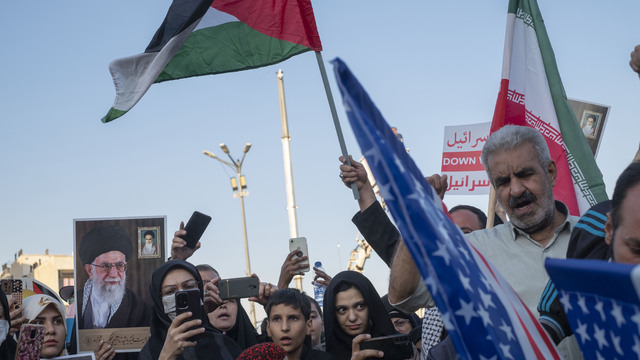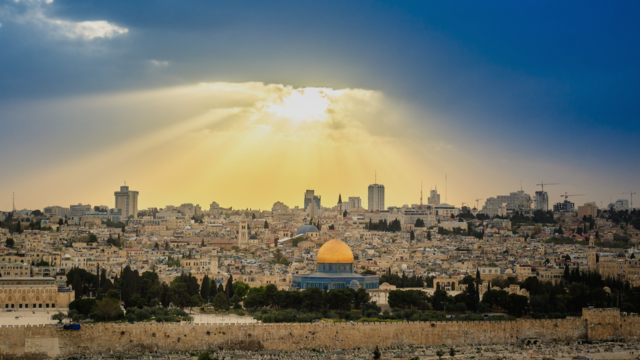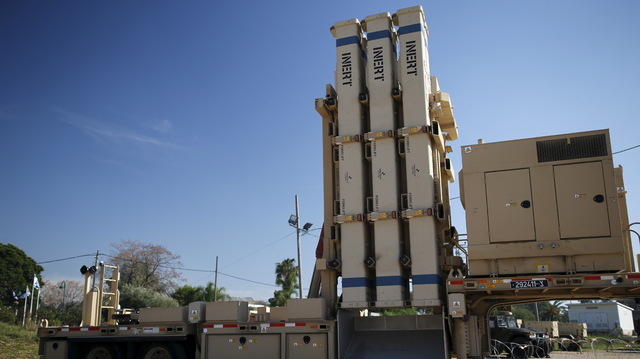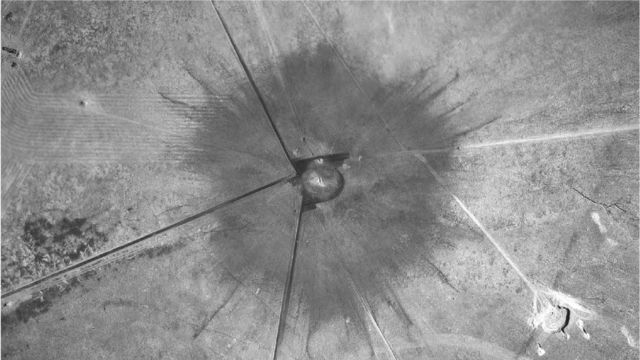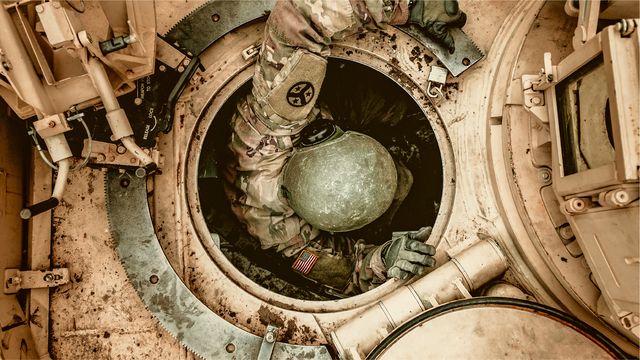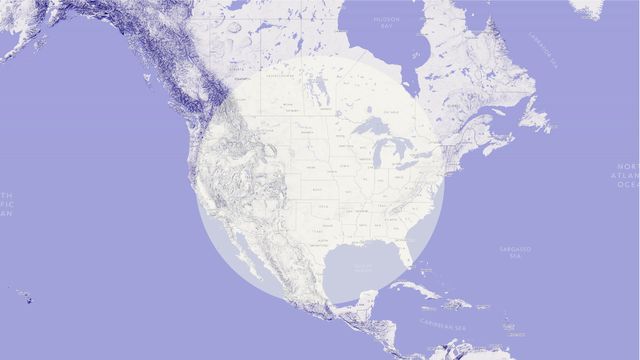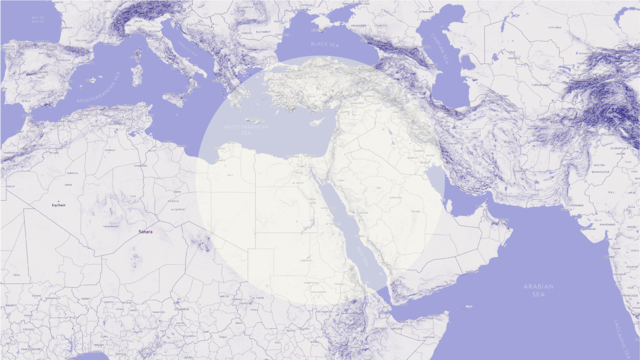The Controversial US Withdrawal from the Iranian Nuclear Deal and its International Consequences
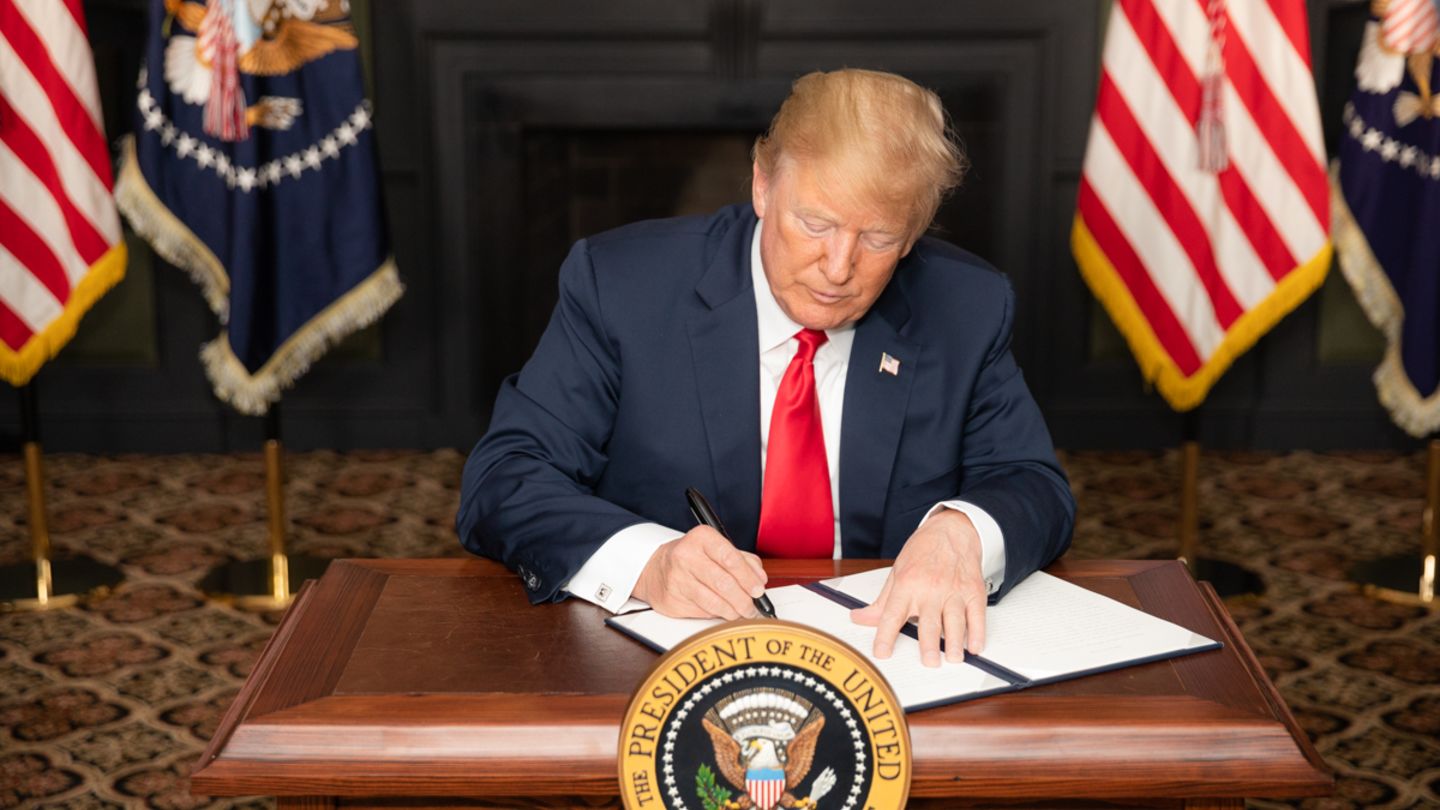
brief
On May 8, 2018, US President Donald Trump went through with his threat and, this time, has not submitted his certification of the implementation of the Iranian nuclear agreement to the US Congress for approval. According to Trump, the document is the “worst deal” of Obama Democratic administration. He made his negative decision despite Iranʼs positive performance in the inspections by the International Atomic Energy Agency (IAEA).
On May 8, 2018, US President Donald Trump went through with his threat and, this time, has not submitted his certification of the implementation of the Iranian nuclear agreement to the US Congress for approval. According to Trump, the document is the “worst deal” of Obama Democratic administration. He made his negative decision despite Iranʼs positive performance in the inspections by the International Atomic Energy Agency (IAEA).
The regular quarterly certification of Iranʼs compliance with the agreement, which is regularly submitted to the US Congress, follows from the Iranian Nuclear Agreement Review Act (2015), which was adopted at the instigation of the main national opponents of the agreement, i.e. the Republican Congressmen and the Pro-Israel Democrats, shortly before the agreement was accepted on July 14, 2015 in Vienna. The new features of the new agreement that is to replace the existing one have been presented by Mike Pompeo (US Secretary of State) on May 21, 2018. Pompeoʼs speech is sometimes referred to as a comprehensive US strategy towards Iran and also as a plan B.
After the announcement by President Trump of the US withdrawal from the agreement, which has the official title the Joint Comprehensive Plan of Action (JCPOA), the other parties agreed to continue following it. The UN Secretary-General, Antonio Guterres, expressed his deep concern about the US withdrawal on May 8, 2018. He called the JCPOA “a major achievement in nuclear non-proliferation and diplomacy and has contributed to regional and international peace and security”. He has also called on other JCPOA participants “to abide fully by their respective commitments under the JCPOA and on all other Member States to support this agreement”.
The Main Features of the JCPOA
The JCPOA entered into force in January 2016. It is a multilateral political arrangement and therefore, to its entry into force, its ratification by the parties to it is not necessary (unlike in the case of classic international treaties). In addition to Iran, five permanent members of the UN Security Council (the PRC, France, the Russian Federation, the United States, and the United Kingdom) and Germany also took part in its negotiations, which lasted for several years. The European Union, represented in recent years by EU High Representative for Foreign Affairs and Security Policy Federica Mogherini, has been coordinating efforts to achieve a successful result of the treaty.
The agreement focuses solely on limiting the Iranian nuclear program, namely activities related to enrichment of uranium which is to be limited to only about 3.6% and restrictions on plutonium production, e.g. there is to be a significant reduction in the stored quantity of low-level uranium and the number of centrifuges, a disabling of the plutoniumʼs production capacity, and some other restrictions. All of this is to be done in exchange for the lifting of the anti-Iranian nuclear sanctions. One aim of the restrictions, among others, was to extend Iranʼs breakout time it would take for it to develop a nuclear bomb from several months to approximately one year. This would be applicable if Iran risked starting a military nuclear program, which might lead to reintroducing a severe sanction regime against it and the possibility of US-Israel military strikes on Iranʼs nuclear facilities.
In the JCPOA agreement, Iran also promised not to develop, produce or own nuclear weapons. Since 1970, the country has been a Non-Proliferation Treaty (NPT) participating state. NPT non-nuclear states have similar obligations as non-nuclear parties to the JCPOA. Iran also voted to adopt The Treaty on the Prohibition of Nuclear Weapons in 2017 and supports the initiatives to convene a conference on the creation of a Middle East zone without nuclear weapons and other weapons of mass destruction. Even after the JCPOA expires in 2025, the Iranian nuclear facilities will still continue to be subject to severe, unannounced IAEA inspections in accordance with the Additional Protocol to the General Safeguards Agreement concluded by Iran with the IAEA in June 1973. The reason for that is the Iranian JCPOA commitment to ratify the Additional Protocol before the Agreement expires, but this has not yet happened.
The agreement does not concern the Iranian missile tests. However, they are mentioned in the UN Security Council Resolution 2231 (2015) of June 20, 2015, to which the full text of the JCPOA agreement is annexed. The relevant provision of the resolution calls on Iran to refrain from activities in the field of ballistic missiles that can be used “as nuclear weapons means of delivery”, but Iran does not violate this provision.
Trumpʼs Reasons for the Withdrawal from the JCPOA
The reasons for the US withdrawal from the JCPOA presented by President Trump are, among other things, often misleading, exaggerated, and taken out of their contractual context.
For instance, the statement “In fact, the deal allowed Iran to continue enriching uranium” ignores the fact that Iranʼs uranium enrichment is very limited due to the significant reduction in the number of centrifuges and the implementation of measures to prevent the production of plutonium. Another of Trumpʼs accusations is that “This disastrous deal gave the regime – and itʼs a regime of great terror – many billions of dollars, some of it in actual cash”. But this accusation is also misguided. In fact, this aspect does not concern money from American taxpayers, but Iranian money in the form of debt obligations held in US banks as a result of the sanctions regime that was returned to Iran after the sanction regime was discarded. The 1.7 billion dollars in cash handed over to Iran by the Obamaʼs administration, did not directly concern the Iranian nuclear agreement. It was rather a refund of the amount due to Iran for its purchase of weapons from the time of the Shahʼs regime. Their delivery did not take place on account of the change of regime in 1979. Further, the allegations of a 40% increase in the Iranian military budget were also exaggerated.
President Trump also referred to Israeli Prime Minister Benjamin Netanjahuʼs PowerPoint-based speech of April 30, 2018. On the basis of documents obtained in Iran by Israeli agents in January 2018, he justified the interest of the Iranian leadership in the developing of a military nuclear program, and also referred to the false arguments made by the Iranian authorities which claimed that the country had never carried out a military nuclear program. Netanyahuʼs claim that this is “new information” was questioned, among others, by the former IAEA Chief Inspector, Olli Heinonen. He stated that “it was a lot of pictures that he had seen before”, namely in 2005. In 2015, the IAEA leadership informed the participants of the agreement about these facts. In the 2007 National Intelligence Estimate report US intelligence agencies also reported that Iran had been developing a military nuclear program until 2003, but its implementation has not been proven after that time. In his speech, the Israeli Prime Minister has not presented a single proof of Iranʼs violation of the Iran deal. However, Netanyahuʼs goal, which was to support the US presidentʼs determination to finally pull out of the Iranian nuclear deal, was achieved.
The purposeful timing of the Israeli Prime Ministerʼs speech is similar to those related to the chemical attacks allegedly committed by the Syrian Government Air Force against the enclaves of the Islamic jihadist movement Tahrir al-Sham and the Jahash al-Islam group supported by Saudi Arabia and the United Arab Emirates in Khan Shaykhun and Duma in April of 2017 and April of 2018. In both cases, they allegedly occurred a few days before the expected official announcement of the US Presidentʼs decision on US policy in Syria in order to reverse the expected US decisions because they did not match the interests of the abovementioned Sunni Arab countries. In April 2017, the expected was Trumpʼs announcement that the overthrowing of the Asad regime is no longer a priority for the United States. This year, it was his announcement of the end of the US military presence in Syria. The result of the alleged attacks were the rash US missile strikes on a Syrian Air Base last year and in April of this year, the US-UK-French attacks against some of the Syrian targets allegedly associated with chemical weapons. These strikes were in contradiction of international law. Moreover, they were carried out without any previous unambiguous conviction of offenders (for example, the inspectors from the Organization for the Prohibition of Chemical Weapons have not begun to investigate the traces of a chemical attack in Duma until after the military action).
The Supposed Aim of the US Withdrawal and a Brief Summary of the New Agreement Presented by Mike Pompeo
According to some of the leading politicians of the Trump administration, the ideal goal should be to negotiate a new and “better” agreement with lasting vali dity. Among these politicians is, for instance, John Bolton, the notorious neo-conservative hawk from the Republican administration of George W. Bush who, until today defends the legitimacy of the US-British invasion of Iraq in 2003. He was also a supporter of the military strikes against Iran and DPRK, countries that were included during the mentioned administration in the so-called axis of evil. Another one of these politicians is the former director of the CIA and the current US Secretary of State Mike Pompeo. However, in their view, the new agreement should not only concern the Iranian nuclear program, but also the development and testing of ballistic missiles and Iranian activities in the Middle East.
In his speech that was delivered on May 21, 2018 at the headquarters of the conservative Heritage Foundation, the US Secretary of State Mike Pompeo outlined the main features of the proposed new agreement. The points mentioned were clearly ultimatums aimed at Iran. These points contained, in particular, the threat of the “strongest sanctions in history” and the “crushing” of not only the Iranian operatives supposedly operating around the world, but also the Iran-backed Islamist groups. These repercussions could be a reality if Iran does not agree to the US proposal. The new agreement should be in a contractual form, based on international law, and it will require ratification by the US Congress. However, it was not specified whether it will be a bilateral or a multilateral international instrument. Its main points are the following: ending uranium enrichment, making unrestricted inspections possible, banning ballistic missile testing, ending the support for the Shiite Houthi rebels in Yemen and the Lebanese Hezbollah movement, withdrawing the Iranian armed forces from Syria, ending the threats to Israel, and obtaining the release all Americans and citizens of allied nations that are currently detained in Iran for “dubious reasons”. At the same time, Mike Pompeo made a promise to Iran that if it agrees to the proposed “major changes”, the USA will end all sanctions against it, re-establish diplomatic relations with it, support the modernization of the Iranian economy, and help it with its reintegration into the global financial system.
Iranʼs supreme spiritual leader, Ayatollah Ali Khamenei, refused Pompeoʼs proposal and stressed the importance of the support for the continued existence of the JCPOA of the three European countries that are parties of the deal. They are still in favor of keeping the deal, the participation of Iran in its fulfillment and the maintaining of currently existing JCPOA text without any extensions. Speaking for the entire EU, Federica Mogherini has spoken to the US proposal for a new agreement. She stated that “Secretary Pompeoʼs speech has not demonstrated how walking away from the JCPOA has made or will make the region safer from the threat of nuclear proliferation, or how it puts us in a better position to influence Iranʼs conduct in areas outside the scope of JCPOA”. She also pointed out that “there is no alternative to the JCPOA”.
Possible Major Reasons for the Anti-Iranian Attitudes of Israel and Most of the Sunni Gulf Monarchies Led by Saudi Arabia
Generally speaking, Iranʼs main Middle Eastern rivals are afraid of the further strengthening of Iranʼs status and prestige in the region and around the world, especially thanks to its engagement in the fight against the so-called Islamic State in Syria and Iraq. In their anti-Iranian rhetoric, they also argue that the removal of a significant portion of the Iranian nuclear sanctions allows the country to integrate itself into international trade and to increase its oil and gas exports. The funds obtained enable Iran to be more militarily involved with the Syrian Asad regime, which as a result of significant Russian military assistance already controls about 80% of the territory, including the largest cities. Iran is also influential in the predominantly Shia Iraq, in Lebanon (through the Hezbollah movement), and in Yemen (through allegedly supporting the Shiite Houthies).
Israel
According to Prime Minister Netanyahuʼs anti-Iranian statements, Israel is mainly concerned that the current JCPOA agreement, after its expiration in 2025, will not effectively prevent Iran from rapidly re-orienting its nuclear-fuel cycle from civilian to military purposes. However, Iran, unlike Israel, is a party to the NPT and as a result of the conclusion of the Safeguards Agreement with the IAEA, all of its nuclear facilities are subject to tighter inspections, which will continue even after the agreement expires. Israel, on the other hand, is the only Middle Eastern country that possesses nuclear weapons. However, it has not yet officially confirmed nor denied their ownership. In relation to the international effort to create a Middle Eastern zone without nuclear weapons or other weapons of mass destruction, Israel has not approved any trustworth initiative and it is de facto blocking its creation. Israel, like all the other nuclear nations, did not participate in the negotiation of the Treaty on the Prohibition of Nuclear Weapons in New York in 2017. In the Middle Eastern region, it promotes the so-called Begin Doctrine, which is aimed at preserving the Israeli nuclear monopoly in this area. Practical examples of it could include the destruction of an Iraqi reactor (Osirak) in 1981, which was condemned by the UN Security Council (including the United States), and the destruction of the Syrian reactor in Al Kibar in 2007.
Another security threat to Israel is the Iranian support of the Hezbollah movement, whose political part has recently won the parliamentary elections in Lebanon. One of the parts of the Hezbollah military, which is referred by the West as a terrorist organization, has gained valuable military experience when it fought together with Syrian government troops. According to Israel, it has also been involved in the creation of Iranʼs military bases in Syria which Israel often preventively attacks, especially near the Israeli-occupied Golan Heights.
Prime Minister Netanyahu has long been trying to present Iran as “public enemy number one”. However, some of the former leading Israeli politicians, such as the former Ministers of Defense Ehud Barak and Mose Jaʼalon, are questioning Netanyahuʼs warning that “Israel is facing an existential threat”. According to the Israeli journal Haaretz, already in 1992, Netanyahu stated that Iran would possess a nuclear weapon in five years, and then in 1993, he predicted that it would happen in 1996. In 2002 and many times since then, he drew attention to the danger of nuclear weapons production in Iran. At the time of the Bush and later the Obama administration, Israeli leaders threatened Iran with military strikes on its nuclear facilities and also encouraged the United States to do the same. Netanyahu compared the JCPOA to the Munich Agreement and called it a “historic mistake”. It is also possible that the exaggeration of the Iranian nuclear threat serves the current Israeli leadership as justification for the continuation of Israelʼs possession of nuclear weapons which permanently raises security tensions in the Middle Eastern region. Another reason for it might be the weakened internal political position of Prime Minister Netanyahu, who could face criminal prosecution for his allegedly corrupt behavior. Moreover, the Israeli armed forces are among the best in the world, and have the latest US weapons (such as F-35s) at their disposal, and the country also has an effective anti-missile system that can be used against various types of missiles (with various ranges). Israel is not threatened by any anti-Israeli coalition because its peace treaties with Egypt and Jordan are in effect. Further, thanks to the existence of a common enemy, Israel maintains tight (albeit not publicly-presented) relations with the main Sunni Arab countries of the Gulf.
Saudi Arabia
The Sunni-dominated Saudi Arabiaʼs main motive for its assertive anti-Iranian policy is definitely connected to the rise of Shíia-dominated Iranʼs power, political, and economic position as its major rival in the Middle Eastern region, particularly after the significant weakening of the Saudi influence in Syria, Iraq, Lebanon, and Yemen. In the background, there is always the irreconcilable conflict of sectarian-religious character between the Sunnis and the Shias about the interpretation of Islam, as the more radical Sunni concept stands in opposition to the more restrained attitudes of Shias. A distinctive expression of the promotion of Sunni Islam is the generous financial and material assistance provided by the Sunni Gulf countries, particularly Saudi Arabia and the United Arab Emirates, to support various Wahhabi religious schools and clergy who then help to spread the Sunni extremist doctrine. Radical Islamist groups professing Salafist teachings also receive support from these countries. It is no coincidence that terrorist attacks are often carried out against Shia mosques in various Middle Eastern countries.
According to Saudi Arabia, the strengthening of Iranʼs influence is contributing to the disruption of the unity of the Gulf Sunni monarchies and to heightening of the allegedly subversive activities of Shia minorities living in these countries. This nonuniformity is also reflected in the deepening of Iranʼs cooperation with Sunni Qatar, against which Saudi Arabia and some other allied Arab countries have declared an economic embargo – they are trying to isolate this small peninsula where the US has the largest Middle Eastern military base. So far, however, they have no significant success in this. Recently, for the first time, there have been military attacks on Saudi Arabia as a result of the launching of several missiles from the Yemeni territory. It was most likely a retaliation for the air raids carried out by the Arab alliance led by Saudi Arabia with the support of the United States and Great Britain. These raids were often targeted at civilian areas in Yemen. Another reason for the attacks on Saudi Arabia could be the catastrophic humanitarian situation, including the cholera epidemic, in Yemen, one of the poorest countries in the world. Finally, the Saudi attempt to force the Lebanese Prime Minister Saad Hariri to resign last November with the intention to break up the fragile Lebanese government backed by Hezbollah also failed.
According to the data from the Stockholm International Peace Research Institute (SIPRI), Saudi Arabia had the worldʼs third-largest military spending in 2017 – $68 billion (after the US – $610 billion and China – $228 bilion). The country is also the main buyer of military technology from the US, Great Britain, and France.
Despite some moderate manifestations of liberalization in the Saudi Arabian society, there is still the palace cleansing in the fight for power, which is euphemistically referred to as the fight against corruption promoted by the ambitious Crown Prince Mohammed bin Salman, and the Vision 2030, which was approved in April 2016 and the overall modernization of the country as its goal. However, the strong influence of the Wahhabi clergy on the social structure of the country poses a serious obstacle to further reforms.
US Threats of Sanctioning European Companies for Continuing to Trade with Iran
In addition to China and Russia, all of the three major European Union countries, i.e. Germany, France, and the United Kingdom (known as E3) have shown interest in keeping the deal. Based on this, Iran expressed the same willingness. Under such circumstances, Iran will have to face renewed and tightened US anti-nuclear sanctions and the other actors, especially the European Union countries, will face the so-called secondary extraterritorial sanctions.
Given the close financial and trade linkages between the US and the EU, the key issue remains whether the EU will find an acceptable solution to the negative impact of the so-called secondary anti-Iranian sanctions on all US and foreign firms trading with Iran.
The estimated value of trade between the EU and Iran is characterized by a significant increase. In 2015, it reached approximately $9.2 billion, in the following year it rose to $16.4 billion, and in 2017, there was already talk of trade worth about $25 billion. The main increase occurred in the area of energy, aerospace, and automobile industries. According to the US Secretary of the Treasury Steven Mnuchin, the sanctions against cooperation with Iran in the aviation and automobile industries should enter into force on August 6 and for the energy and financial sectors on November 4.
Iran has the worldʼs largest supply of natural gas and is its third largest producer. The country also has the fourth largest supply of oil and is among its top ten producers in the world. The main buyers of these raw materials are, in addition to the EU countries, China and India (the two main Asian states). The European Union is aware of Iranʼs great potential in producing energy which, among other, could further diversify the EUʼs resources of these raw materials. As a result, there is the importance of EU-Iran cooperation to aid the development of Iranʼs strategic natural-gas condensate field of South Pars (located in the Gulf and shared with Qatar). This development could help Iran to secure future increase in gas production even when the production from other sites declines, and also contribute to the improvement of domestic energy production efficiency. In the energy field, it is mainly the company Royal Dutch Shell that is involved in the development of Iranian gas and oil fields. The French company Total is also involved in it and in 2017, it entered into an agreement with Iran to develop the South Pars natural-gas condensate field, which is worth about $3.8 billion.
Iran was supposed to purchase 100 airplanes from the European corporation Airbus. However, some parts of these airplanes, such as their engines, are produced in the US, which makes the deal impossible. Also the United States Department of the Treasury has clarified that the licenses for Airbus and US Boeing to export airplanes to Iran will be revoked.
It should also be mentioned that the European car makers Volkswagen, Renault, and Peugeot, as well as the engineering giant Siemens, are to be sanctioned the most for doing business with Iran.
The EUʼs Options for Weakening the American Sanctions
In response to the mentioned secondary extraterritorial sanctions against foreign firms and financial institutions, the E3 Foreign Ministers and Iran held a meeting in Brussels on May 15 with the chairmanship of Federica Mogherini, the High Representative of the European Union for Foreign Affairs and Security Policy.
After the talks, Mogherini stated that the EU agreed to launch multi-level activities to keep the JCPOA in force. They should include continued sales of Iranian oil and gas products, mutually effective banking transactions, addressing the issues related to maritime, land, air, and rail transportation, new EU investments, banking, insurance, and commerce, as well as a blocking mechanism to hinder the negative sanctions on European corporations. On May 16, a summit was held in Sofia where the same issues were discussed, particularly in terms of addressing the issues related to EU economic sovereignty and the preservation of multilateralism as a key element of the EU policy.
To defend its economic interests and counteract the US secondary sanctions, the EU could use the so-called blocking regulations, according to the European Commissionʼs announcement. Their activation would result in businessmen and corporations operating in the EU being penalized should they adhere to the US anti-Iranian sanctions. In the past, these measures were accepted in 1996 as a defense of the EU against the secondary extraterritorial economic sanctions against Cuba. In practice, however, they were not used at that time.
With respect to President Trumpʼs isolationist, power-wielding, and protectionist policy, as represented in his electoral slogan “America First”, which promotes the cancelation of all the major positive results of the Obama Administrationʼs foreign, security, and internal policies, the efforts of leading European statesmen, especially E3 countries, to change some of Trumpʼs negative attitudes were lost causes and also undignified. These efforts were connected with maintaining the US support for the Paris Climate Agreement, urging against Trumpʼs intention to declare Jerusalem Israelʼs capital and the related relocation of the US Embassy from Tel Aviv to Jerusalem, arguing against the acceptance of the high US tariffs for imports of steel and aluminum (25% and 10% respectively), since temporary exemption from these tariffs for the EU countries expired on June 1, 2018, and at the beginning of May unsuccessful attempt to persuade the US president not to step down from the Iranian nuclear deal.
Conclusions
The JCPOA is certainly not perfect, but it is a useful tool to prevent Iran from acquiring nuclear weapons in a relatively short period of time in case the country chooses to do so. Its negotiation has managed to solve one of the most watched international security crises and a serious nuclear proliferation problem that goes beyond the regional scope.
The US withdrawal from the JCPOA and the commitment of the remaining participants to continue to fulfill it is yet another manifestation of the deepening US isolation in world politics. At the same time, it significantly weakens the United Statesʼ position as a credible partner in the international contract process. In addition to Iranʼs efforts to not significantly weaken its position on the European market, we can expect further strengthening of the countryʼs relations with Russia and, in particular, China, which showed an interest in further economic cooperation with it – e.g. by launching of a new railway connection.
The abovementioned move of the Trump administration is also a serious test of the transatlantic cooperation, the economic sovereignty of the European Union, and its prestige in world politics. An increasingly urgent question is how long the EU will let itself be humiliated based on its support for the transatlantic solidarity, the motto “America First”, and the pressure policies that come with the saying “who does not go with us, goes against us”. The transatlantic allies are increasingly seeing conflict between the European liberal concept of international relations with emphasis on multilateralism and the so-called soft power in resolving problems, and Trumpʼs unilateral, isolationist, protectionist, and populist politics with emphasis on hard power in international relations.
In promoting its assertive anti-Iranian policy in the Middle East, Trumpʼs Republican administration, unlike the European allies, has greater support from its closest partners in the region – Israel, Saudi Arabia, and the United Arab Emirates. By withdrawing from the agreement, it has clearly supported their interests and carried out another vigorous and uncompromising rejection of all the positive results of the previous administration.
Considering Iranʼs refusal to accept the new agreement, what the Trump administration likely expects from the allegedly tough and tried primary sanctions against Iran and the associated secondary sanctions is an economic disruption of the country and a significant deterioration in the living standard of the Iranian population. It cannot be ruled out that the US also expects subsequent wide-ranging internal political turmoil in Iran which might result in a new regime, one more willing to accept American demands in exchange for the lifting of the sanctions.
Other Anticipated Developments
The idea that the withdrawal from the Iranian nuclear deal and the announcement of anti-nuclear sanctions will lead Iran to establish a new regime that would be willing to adhere to US conditions is not very realistic, according to the assessment of various experts on the Iranian issue.
Right now, it is more likely that in Iranian national policy, in the event of complete failure of the JCPOA, the Iranian conservative forces will prevail again and restore in full the uranium-enriching nuclear program with the maximum enrichment of up to 20% that existed in Iran before the acceptance of the abovementioned agreement will prevail again. (Authorʼs note: either uranium-enriched by 80-90% or plutonium recovered from used fuel is used as the explosive source for nuclear weapons.) In this case, however, a sharp increase in the tensions in the Middle Eastern region cannot be ruled out, and it could possibly include US and Israeli military strikes on the related nuclear facilities with all expected devastating consequences such as Iranian strikes on American bases in the area, military vessels, and Israeli and Saudi territories. A new question also arises: will Iran, under these circumstances, continue to fulfill its obligations under the NPT, i.e. will it continue to allow inspections of its nuclear program? The country may also choose a similar path to that of the DPRK, i.e. stepping down from the NPT and building a military nuclear program as the main defense against the threat of a possible overthrow of the regime. Iran will want to avoid Saddam Husseinʼs fate in Iraq and Muamar Gaddafiʼs in Libya, as there were no weapons of mass destruction in those countries when these leaders were defeated.
It cannot be ruled out that the E3 countries, in parallel with their efforts to implement the current agreement, will simultaneously try to negotiate with Iran about the possibility of accepting another agreement, probably for the period after the expiration of the JCPOA in 2025. According to French President Macron, the new agreement should be more comprehensive and long-term, and should include three new pillars: a nuclear agreement, better inspections and monitoring of ballistic missile-related activities, and limitation of Iranian influence in the region, particularly in Iraq, Syria, Lebanon, and Yemen.
Based on Trumpʼs past efforts in the area of foreign and security policy, Europeʼs commitment to achieving effective European strategic autonomy, including security and defense, will gain increasing support in Europe. However, the transatlantic linkages and cooperation within NATO should remain.
In connection with the announcement of the secondary sanctions, it appears that mainly large foreign companies, often with international participation, are worried about any damaging of their interests in the American commercial and financial market. They are also worried that they might more easily succumb to US pressure to end trade and financial cooperation with Iran. For instance, the worldʼs largest oil shipping company, A.P. Moller-Maersk, has already announced that it will end its commercial activities with Iran. Similarly, the French oil company Total has announced the termination of its business activities in the Iranian gas field of South Pars in the Gulf. The corporationʼs investment will likely be taken over by China. Unless the US grants this company an exception to the planned sanctions, Total is also determined to end its remaining business co-operation with Iran.
In support of the US secondary sanctions, Saudi Arabia has been cancelling some lucrative business contracts with a number of German automobile companies. A similar approach can also be expected from the United Arab Emirates. The German Chancellor Angela Merkel has admitted that the EU will be limited in its adoption of anti-sanctions measures. However, the greatest efforts of the EU institutions will probably focus on providing legal and financial guarantees to protect the economic interests of small and medium-sized companies that will continue trading with Iran.
It can be assumed that despite the strong standpoint of the EU leaders in relation to the protection of the EUʼs economic interests, in which the adoption of anti-sanctions measures would be possible, the EU leadership will not be interested in any excessive conflict with the US and will continue to seek to strengthen the transatlantic cooperation. In this effort, the EU will most likely have the full support of the Czech Republic.



